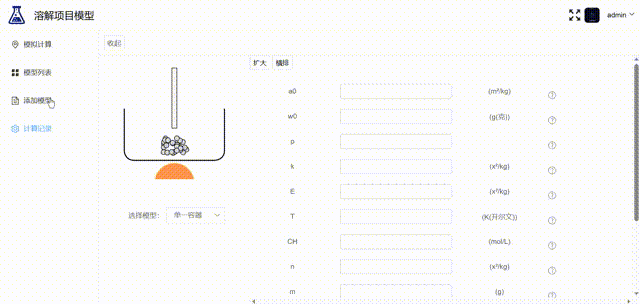一、大概流程

二、用到的Vue3知识
1、组件通信
(1)父给子
在vue3中父组件给子组件传值用到绑定和props
因为页签的数组要放在父页面中,
data(){return {tabs: []}},所以顶部栏需要向父页面获取页签数组
先在页签页面中定义props用来接收
props:{tabs: Array // 声明一个 props,指定数据类型为数组},再在父页面中的子页面标签中用:绑定符绑定
<NavBar :tabs="tabs" ></NavBar>这样就可以将父页面的页签数组传到子页面里
(2)子给父
因为子页面中存在路由跳转新页面操作时候需要增加页签,也就是将新的页面作为tab加入到页签数组中,而页签数组放在父页面里,所以需要子给父传值
子给父传值是通过调用方法实现用this.$emit("通信名",数据)实现
比如这里的添加页签操作则是
this.$emit("addtab",tab)
然后在父页面的子标签里用@接受通信名并绑定调用的方法,
<router-view @addtab="addTab"></router-view>同时将数据作为data参数传入方法
addTab(data) {//最简单的push操作,还没完成其它逻辑this.tabs.push(data);}三、实现整体逻辑
1、父页面中
(1)编写增加页签的逻辑
addTab(data) {// this.tabs.push(data);// 判断是否已存在相同的 title 和 routeconst exists = this.tabs.some(tab => tab.title === data.title && tab.route === data.route);if (!exists) {this.tabs.forEach(tab => {tab.selected = false;});this.tabs.push(data);}else{this.tabs.forEach(tab => {tab.selected = tab.title === data.title && tab.route === data.route;});}// 更新浏览器缓存this.saveTabsToLocalStorage()}(2)编写关闭页签的逻辑
closeTab(index) {this.tabs.splice(index, 1); // 从数组中移除页签if (this.tabs.length > 0) {this.tabs.forEach(tab => {tab.selected = false;});// 如果还有其他选项卡,跳转到最后一个选项卡的路由const lastTab = this.tabs[this.tabs.length - 1];this.$router.push(lastTab.route);this.tabs[this.tabs.length - 1].selected=true;} else {// 如果没有选项卡了,跳转到默认的首页路由this.$router.push("/1/C");}// 更新浏览器缓存this.saveTabsToLocalStorage()},(3)页签数组缓存到浏览器和从缓存加载
mounted() {this.loadTabsFromLocalStorage();},methods:{// 缓存到本地saveTabsToLocalStorage() {localStorage.setItem('tabs', JSON.stringify(this.tabs));},// 从缓存加载loadTabsFromLocalStorage() {const storedTabs = localStorage.getItem('tabs');if (storedTabs) {this.tabs = JSON.parse(storedTabs);}},}缓存页签数据到浏览器,页面刷新时,页签状态保留当前状态不会清空

(4) 和顶部栏通信
<NavBar :tabs="tabs" @asideCollapse="collapse" @closetab="closeTab">(5)和有产生页签需求的子页面通信
<router-view @addtab="addTab"></router-view>
2、顶部栏
(1)渲染页签
<div class="top-bar"><!-- 渲染页签 --><divv-for="(tab, index) in tabs":key="index":class="['tab', { 'selected': tab.selected }]"@click="switchTab(tab)">{{ tab.title }}<span class="close-btn" @click.stop="closeTab(index)">×</span></div></div>(2)编写页签样式
<style lang="scss" scoped>.top-bar{display: flex;margin-left: 20px;caret-color: transparent; /*去除鼠标光标*/width: 100vw;overflow-x: auto; /* 允许横向滚动 *///overflow: hidden;div:hover{cursor:pointer;}div:not(:first-child){margin-left: 10px;}div{display: flex;justify-content: center;align-items: center;padding: 5px;font-weight: 500;font-size: 14px;color: #606266;border: 1px solid #DCDFE6;border-radius: 4px;//width: 100%;height: 30px;white-space: nowrap; /* 防止内容换行 */span{width: 15px;height: 15px;margin-left: 4px;display: flex;align-items: center;justify-content: center;}}.tab{background-color: #eeeeee;span:hover{background: linear-gradient(rgba(96, 98, 102, 0.1), rgba(96, 98, 102, 0.1)); /* 在悬停时更改透明度 */}}.selected{background-color: #c6fce5;}
}</style>(3)接受父页面数据
props:{tabs: Array // 声明一个 props,指定数据类型为数组},(4)向父页面发送关闭页签请求
// 关闭页签closeTab(index) {this.$emit("closetab",index)},3、子页面
(1)向父页面发送增加页签请求
methods:{addTab(tab){this.$emit("addtab",tab)}}(2)在有跳转路由的需求的标签绑定请求
比如菜单项
<el-menu-item index="/1/C" @click="addTab({title: '模拟计算', // 页面标题route: '/1/C', // 路由selected: true // 设置选中状态})">四、展示效果

五、可能会出现的错误
1、在本地环境运行无错误,部署到生产环境后会报
TypeError: Cannot read properties of null (reading 'insertBefore')的错误
解决方案
(1)NavBar顶部栏组件中v-for渲染tabs数组没有判断tabs是否为空
(2)切换vue为版本 (vue@3.2.45) 来修复它。
npm i vue@3.2.45






)

—— 中断(基于Linux 2.6内核))
与 Eureka 的区别及集群模式比较分析)

》)

)





